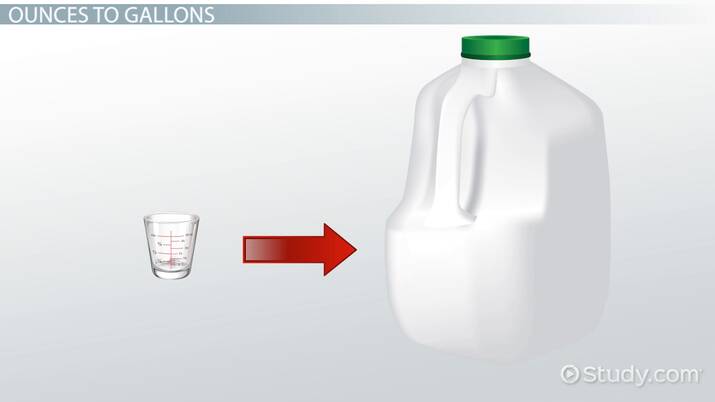How Many Ounces in a Half Gallon? A Straightforward Answer
The answer to the question “How many ounces are in a half gallon?” is surprisingly simple: there are 64 fluid ounces in a half gallon.
This conversion rate applies in the United States customary system of measurement. It’s important to note that the imperial gallon used in the United Kingdom and some Commonwealth countries is slightly larger, and a half imperial gallon would contain 80 fluid ounces.
Here’s a quick breakdown for easy reference:
- 1 Gallon (US) = 128 Fluid Ounces (US)
- Therefore, ½ Gallon (US) = 64 Fluid Ounces (US)
Understanding Gallons and Fluid Ounces
- A gallon is a unit of volume commonly used for measuring liquids.
- A fluid ounce is another unit of volume specifically used for liquids.
Using This Knowledge in Everyday Life
Knowing the conversion rate between gallons and ounces can be helpful in various situations, such as:
- Following recipes: Many recipes list ingredients in ounces, and knowing how many ounces are in half a gallon allows you to easily scale the recipe or determine the amount needed from a larger container.
- Mixing liquids: Understanding these measurements is useful when mixing liquids in specific ratios, such as diluting concentrated solutions.
- Comparing product sizes: Product labels often display volume in ounces or gallons. Knowing the conversion rate allows you to compare the value and efficiency of different sized containers.
Beyond the Basics: Delving Deeper into Gallon and Ounce Conversions
While the core question of “how many ounces are in a half gallon?” has a straightforward answer (64 fluid ounces in the US system), venturing deeper reveals a world of measurement systems and conversion complexities. This section explores the intricacies of gallons, ounces, and their fascinating history.
A Gallon Through Time: A Historical Perspective
The gallon, with its various iterations, boasts a rich history. Here’s a glimpse into its evolution:
- Roman Empire: The Romans used a unit called the “amphora” for measuring liquids, roughly equivalent to 8 gallons.
- Medieval Europe: During this period, the gallon emerged as a unit of volume, though its exact size varied significantly across regions. It was often based on the volume of a cylindrical container used for trade.
- The British Empire’s Influence: The British Empire standardized two distinct gallon measurements:
- Imperial Gallon: This larger gallon, used in the UK and some Commonwealth countries, is equal to approximately 160 fluid ounces.
- US Gallon: Defined in 1824, the US gallon is slightly smaller than the imperial gallon, containing 128 fluid ounces.
The Ounce: A Versatile Unit
The ounce, a smaller unit of volume, has also undergone historical variations. Originally derived from the weight of a specific coin, it eventually transitioned to a unit based on fluid volume. There are two primary types of ounces used for liquids:
- Fluid Ounce: This unit specifically refers to the volume of a liquid and is the type used in gallon conversions (1 gallon = 128 fluid ounces in the US system).
- Dry Ounce: This unit measures the volume of dry goods like grains or powders and is slightly larger than a fluid ounce.
A World of Measurement Systems: Beyond Gallons and Ounces
The US and imperial gallon systems are just two examples within a broader world of measurement systems. Here’s a glimpse at some others:
- Metric System: The metric system, based on the meter, utilizes liters for measuring liquids. 1 US gallon is approximately equal to 3.785 liters.
- Canadian System: Canada primarily uses the metric system, but remnants of the imperial system linger. For example, milk is often sold in bags containing 4 liters (slightly less than 1 imperial gallon).
The Importance of Unit Conversions: Making Sense of Recipes and Labels
Understanding gallon and ounce conversions is essential in various situations:
- Recipe Scaling: Recipes often list ingredients in ounces. Knowing the conversion rate between gallons and ounces allows you to adjust recipe quantities for different serving sizes.
- Following Mixing Instructions: Products like concentrates or cleaning solutions might require dilution with water in specific ratios. Understanding ounces helps you measure accurately.
- Comparing Product Values: Product labels often display volume in ounces or gallons. Knowing conversion rates allows you to compare the value and efficiency of different sized containers.
Beyond the Basics: Advanced Conversions and Calculations
For those comfortable with math, here are some advanced conversion techniques:
- Converting Between Imperial and US Gallons:
- To convert from imperial gallons to US gallons, multiply the imperial gallon amount by 1.201.
- To convert from US gallons to imperial gallons, multiply the US gallon amount by 0.833.
- Calculating Fluid Ounces from Other Units:
- You can convert from liters to fluid ounces by multiplying the number of liters by 33.814.
A Final Note: Embracing Measurement Knowledge
Understanding measurement systems, particularly gallons and ounces, empowers you to navigate everyday tasks with confidence. From scaling recipes to comparing product deals, this knowledge proves valuable in various situations. So next time you encounter a recipe calling for half a gallon of milk, you’ll know exactly how many ounces to measure!
In Conclusion
While seemingly a simple question, understanding the conversion between gallons and ounces can prove useful in various everyday tasks. The key takeaway is that there are 64 fluid ounces in a half gallon (US customary system).






More Stories
Where to Watch USMNT vs Jamaica National Football Team
How I Met My Monster
How Should a Ring Fit